Please choose your country or region so we can show you the most relevant content.
It looks like you are in United States? Accept
Africa
- Algeria
- Angola
- Benin
- Botswana
- Burkina Faso
- Burundi
- Cabo Verde
- Cameroon
- Central African Republic
- Chad
- Comoros
- Congo
- Côte d'Ivoire
- Djibouti
- DR Congo
- Equatorial Guinea
- Eritrea
- Eswatini
- Ethiopia
- Gabon
- Gambia
- Ghana
- Guinea
- Guinea-Bissau
- Kenya
- Lesotho
- Liberia
Asia
Australasia
Europe
- Albania
- Andorra
- Austria
- Belarus
- Belgium
- Bosnia and Herzegovina
- Bulgaria
- Croatia
- Czechia
- Denmark
- Estonia
- Finland
- France
- Germany
- Greece
- Greenland
- Holy See
- Hungary
- Iceland
- Ireland
- Italy
- Latvia
- Liechtenstein
- Lithuania
North America
Middle East
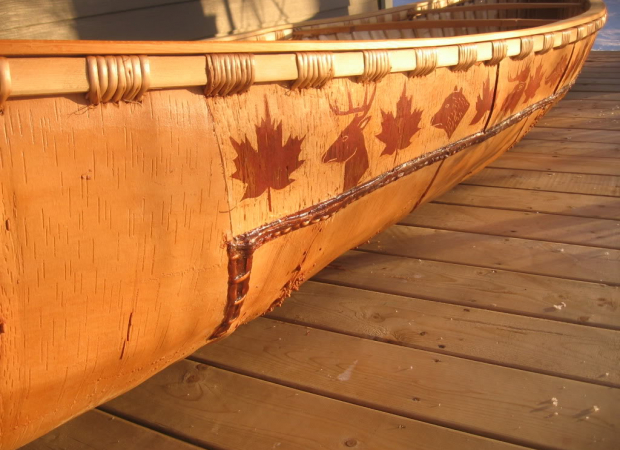
Adventure Camping Expedition
CANOE CAMPING – ORIGINS
1 Feb 2013
Part 1 of a 2-part essay by Tim Gent.
For more information, contact Tim via http://www.facebook.com/T.H.Gent
Sustainability is a frequently bandied and increasingly meaningless term, but if a creation can be labelled sustainable with any real validity it’s the birch-bark canoe. Save for the odd ash-wood thwart this classic craft of the American Boreal forest was usually constructed from only four constituents – white cedar for the frame, birch bark for the outer hull, boiled and split spruce roots to bind it all together and spruce or pine resin (mixed with a little animal fat) to seal any seams. The result was incredibly light, surprisingly robust and easy to repair with materials immediately to hand in the surrounding forest. Just as importantly, these little vessels suited their role perfectly.
When the indigenous people of northern America first developed the canoe they needed a workhorse. Living within a heavily wooded landscape in which only rivers and lakes offered easy access to vital resources, they required a reliable and efficient vessel to carry firewood, building materials, baskets of berries or the results of a successful day’s hunting. It had to be able to fetch and carry, transport them to the nearest fishing ground, and once there provide a reliable platform from which to set or haul nets. And when needs arose, the canoe was required to transport the family and all their belongings from one shore to another. I like to think that with time and experiment they produced something of almost unparalleled beauty and practicality.
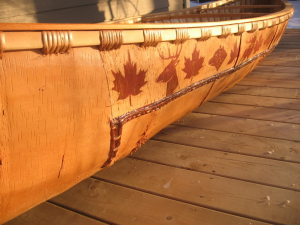
No wonder then that so many people have been drawn to use a descendent of this vessel today. That appeal is not new.
So well-suited was the birch-bark canoe to its environment, that when British and French settlers and traders first started to exploit the area (and alas its inhabitants) they soon abandoned their own heavy clinker built rowing and sailing boats in favour of these featherweight home-produced craft. Much of this was down to the terrain. While numerous waterways offered perfect thoroughfares amidst the forest for the Algonquin, Cree, Iraquois and other Great Lakes tribes, these rivers were often interrupted by awe-inspiring rapids and waterfalls. A reasonably fit adult could pick up a birch-bark canoe, carrying it the mile or two sometimes needed to circumvent these natural barriers. Try doing that with a traditional European boat.
At first the new arrivals were happy to utilise the standard canoe, usually no more than 13 to 15 feet in length. The local tribes did have larger versions though, and it wasn’t long before the European traders, who had managed to evolve almost overnight into the omnipotent Hudson Bay Company, commissioned skilled indigenous craftsmen to produce truly massive birch-bark canoes. These could be 30 or even 40 feet in length, capable of carrying as much as three tonnes of cargo.
Great fleets of these Canot du Maître set off each spring as soon as the snow and ice melted, racing north-west into the fur-rich centre of what was soon to become Canada. Hardened teams of experienced and skilled canoeists endured astonishingly tough summer months, paddling through almost every daylight hour to extract extremely valuable goods, principally beaver skins, before the ice once again placed its steadying and prohibitive grip on the land.
Looking back, this was a truly remarkable time, and it could be argued that it was the birch bark canoe with its hardy crews that made modern Canada. It wasn’t until around 1890, when the railway finally pushed deep into the land, that the great canoe was ousted. Within a decade they had all but vanished.
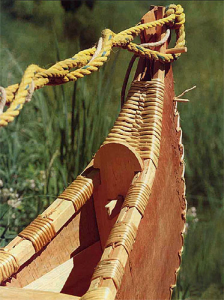
Significant as those mighty vessels were to the formation of a modern nation, in canoe developmental terms they represented what was essentially no more than an anomaly – a fleeting if awe-inspiring and astonishingly effective response to the needs of an avaricious incomer. While they plied their trade along the busy commercial highways of this new country, the lives of the everyday new Canadians continued to be served by its much older and smaller brother – the ancestor to my wilderness transport of choice.
But huge changes were also about to take place in standard canoe construction and design. Europeans had been using the small birch-bark canoe for decades. Photographs taken in the late 1800s and first few decades of the twentieth century show tourists, fisherman and hunters in small Algonquin Wâbanäki tcîmân canoes. Often resplendent in jacket and tie, they are usually propelled by skilled local guides. As the recreational appeal of the canoe grew, European builders soon took control. First they stuck pretty close to the original. Altering only the production methods to suit their abilities they began to produce a string of often staggeringly beautiful cedar and canvas models.
For a while during the decades around WWII the canoe slipped slightly from the attention of the northern American population. This was perhaps due to a largely unconscious attempt to place their new society at a safe distance from the surrounding wilderness from which it had just been dragged.
It took a few farsighted individuals to remind people what they were missing. While certainly not alone in this role, Bill Mason does stand out. Inclined to inspire rather than dictate, this filmmaker, canoeist, leading environmentalist and artist helped to remind Canadians of their inherited and shared heritage. Huge numbers returned to the canoe, prompting a massive technological advance – first with the introduction of fibre-glass, aluminium and plastic craft, then most recently with feather-light Kevlar.
Yet despite all this change, the purpose of a canoe has remained remarkably similar. Today countless thousands of paddlers from Canada or the US set out in a canoe each day to explore, hunt, fish, or simply to use their versatile craft to reach somewhere they can have all to themselves. The many benefits of a canoe are not lost on modern Americans, and these benefits are just as valid on this side of the Atlantic.
What could be better than to head down a sunlit Scottish Loch or Scandinavian Lake, to land somewhere otherwise inaccessible, far from the increasing onrush of humanity before walking and clambering amidst the beauty of these rare remote regions? Well I might suggest spending the night there, waking in the morning as the flash and shimmer of the sun off nearby waves calls you on to another day of exploration and fulfilment.
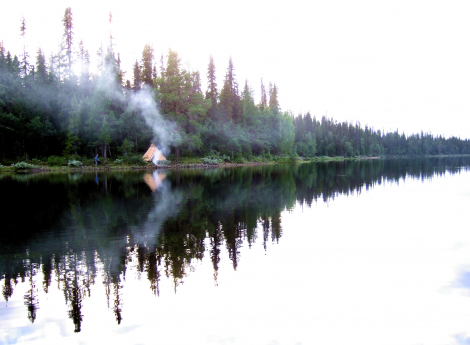 |
| Camp on the River Laisalven, Sweden. Copyright Tim Gent. |
Camping connects us with a not so distant and very significant past. Even us western Europeans, unquestioningly urbanised, have experienced a sedentary existence for only a fraction of our sometimes suspect development and evolution. Camping anywhere appeals. Spending time under canvas somewhere out of the way touches at those experiences that have formed and fashioned our very character. It can be profoundly satisfying.
Add to this reconnection all the benefits that come from using a craft fine-tuned over millennia to serve just this purpose, and the experience can be almost overwhelmingly fulfilling. And the principal benefit is sheer carrying capacity.
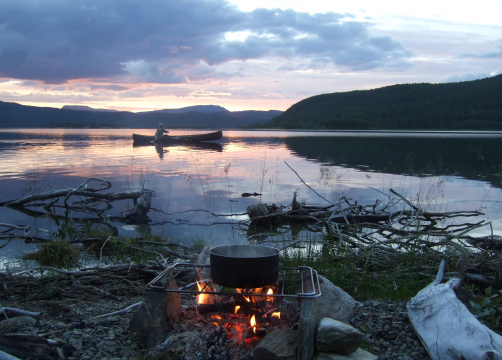 |
| Cooking on the edge of Lake Sadvajaure. Copyright Tim Gent. |
When I first started camping, just after the Saxon defeat at Hastings, I used a dark green canvas tent, given to me by a retired army officer. This wonderful creation, still smelling of tarred hemp guy ropes and India, had been made for the Australian troops. Designed as a bivy for only two, and even without its separate canvas groundsheet, it still weighed almost as much as me. I could only just carry it tied bulkily along the top tube of my five-speed racing bike, propped rather alarmingly over the chromed drop handlebars. After disappearing one summer in southern France, that lovely green canvas thing was replaced by a lovely white (well almost white) canvas version. Also of WWII heritage, and originally bought by my grandfather, I loved that tent. It could sleep four or five comfortably, and in hot weather all the sides could be tied up, leaving only a good breezy awning. I wish I had it now.
But when the lure of the hills grew strong, and it was down to shank’s pony to lug all that camping kit up increasingly steep and lengthy routes, the understandable appeal of the miniscule stepped in. First a slightly more sensible, or at least smaller and far lighter, nylon version took over from that white tent – which had by this stage seen far better days. Then, as funds allowed, an excellent if astonishingly expensive mountain tent soon replaced that. It weighed less than my first groundsheet.
These tiny shelters were the first to be thrown into a canoe. But then one day, as I surveyed the vast empty prairie of hull interior spread out around that small green bag, my thoughts turned to that old white tent. You could stand up in that I recalled. More than just huddle in that thing, you could actually live in it.
In short, after a lot of research and deliberation, a Tentipi Safir 7 eventually filled that space. Big admittedly, and no more suited to bicycle transport than my first tent, it represents no problem for our 16-foot Prospector. Now Susannah and I can enjoy more tent space than we can ever really use – although we do try. And our canoe can manage almost anything else we may wish to take.
Along with the Tentipi Safir, our dark green Wenonah manages all our other camping gear with ease – cooking and eating equipment, bedding and food. Thanks to the canoe there seems almost no limit to what we can take. In the past, in pre-paddling days, we might have spent hours trying to decide what clothes, pans, or tasty delicacies we could carry into the wild, pondering on which almost essential items might have to be left behind. Now we just fill a large mountain holdall, a couple of stout Ortleib dry-bags and a large food box and take everything – I recently found a whole cake wrapped in tea towel on unpacking a bag at the back of a Scottish beach. We strap in fishing rods, assorted tackle, even a crab pot at times. The addition of a camera tripod and waterproof camera case is not a problem. In it goes. For our wetter or cooler expeditions we even carry a purpose-built wood-burning stove – an Eldfell – again produced by Tentipi. This heats the tent and its contents. We can even cook on it when it’s in action. Perhaps just as importantly, operating on the north-west coastal fringe of Europe, it helps to keep everything dry.
What this means in practice is that transported and supported by our canoe we can camp comfortably anywhere we are allowed to put up a tent. We can also be sure of enjoying the experience in any weather and at any time of year.
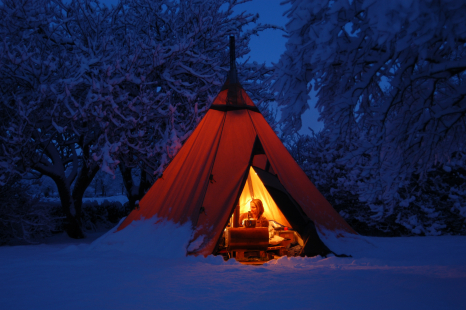 |
| Tentipi Safir 7 CP in snow. Copyright Tim Gent. |
I still find it a little hard to believe, but during a night camped in heavy snow what has always seemed a perfectly reliable thermometer once measured a low of minus 16°C outside our Safir – and this was in England. Inside our Tentipi tent, with the Eldfell burning a good dry mix of soft and hardwoods, we basked in a wonderfully dry and warm atmosphere. In fact, until I widened the opening on the tipi’s air vents, I was too warm to sleep.
Nights have been spent above the Arctic Circle on the edge of Swedish rivers and lakes, by stunning fjords in Norway, and once at over 700m on the tundra between the two countries. On that last occasion, after climbing a small peak to look back at our campsite, we spotted our Tentipi tent, with canoe drawn up alongside, close to the head of the river. Following the course of this budding torrent down to where birch started to colonise the shallow valley, we saw the first of a scattered line of Sami kata, ancestors to our modern Swedish tent, making the most of this limited shelter. A special moment.
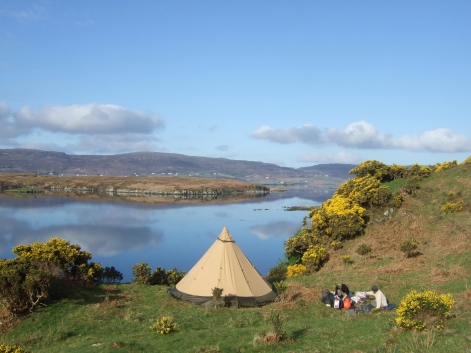 |
| Campsite on Loch Dunvegan. Copyright TimGent. |
Perhaps one of our most satisfying British escapes saw us on the shore of Loch Etive on the west coast of Scotland. Here, close to the tide, a long if extremely comfortable night was spent midway between one year and another. Not your usual Hogmanay celebration perhaps, but with a new year ahead, what’s that saying? – “start as you mean to go on”.
So this now completes the first part of our canoe camping journey. We’ve looked at the origins of this amazing craft, and touched upon some of our own personal camping experiences here. The second part of this trip takes us a little further into the world of equipment – please feel free to add your own suggestions and experiences too.
Related blog posts
It was the first day of the trip, adventurer Mike Fuchs and his friend Eric Folz had just a couple of hours before been dropped off as far north as they could possibly come in Svalbard when they saw them. Two polar bears, one mother and its cub. A situation that could become deadly if the bears decided to have a closer look on their new visitors.
“I know how protective the mothers can be of their cubs. We had to set up our camp in a place that provided a good overview of the location so we could spend the night bear watching. It was both a scary feeling seeing them so early into our trip, but it was also very fascinating”, says Mike Fuchs.
Wouldn't it be exciting to spend the night right in the middle of a zoo? – That is exactly what you can do at Skånes Djurpark, a wildlife park in southern Sweden. At their campsite, Camp Oak, you stay in the park after it closes and will make yourself at home in a Nordic tipi from Tentipi. When the night comes you might just fall asleep to the wolves’ howls.
Skånes Djurpark is a Wildlife Park with a long history, it dates back to 1952. It focuses on animals from the Nordic area and has always lived by the ruling with “no animals in cages”. The animals live in large paddocks that recreates the animals’ natural environments.
Lennart Pittja is a Sámi entrepreneur with a mission: with his world-renowned eco-tourism company he wants to spread the knowledge about his people – the Sami, indigenous of northern Scandinavia and Russia. With over 20 years of experience as a wildlife guide and nature photographer in the arctic region he started Sápmi Nature Camp. Where his guests stay in Nordic tipis from Tentipi on his reindeer herding land outside of Gällivare, in northern Sweden.
At Sapmi Nature camp you can experience real winter, see the northern lights, eat traditional Sami food, and have a cultural exchange in a genuine atmosphere. The scenic location has gained attraction from around the world. In 2017 it was listed by National Geographic as one of the top 21 places in the world to visit if you care about the planet.
Prepare before setting out for winter camping. Here are nine tips and tricks from Tentipi about what you need to think of before you go: the right tent for winter camping, how to pack the snow, comfort in snow, which tent pegs to use, where to pitch the tent, about snow weight, what heat sources can be combined with the tent, how to make a fire safely and other equipment.
Choose tents according to occasion, different tent types work differently at winter camping. When it’s icy, the tent needs to be more robust than a tent which is exclusively used in summer. The tent frame needs to withstand a certain amount of snow and functional ventilation is important. If you want to use a heat source, for example a fireplace or a stove, the tent needs to have ventilation openings both at ground level and at the top. Without a heat source, a smaller tent is preferable, as it heats up faster when the air volume is smaller.
A tent from Tentipi is a Nordic tipi and the tent has eight or nine sides, if it is not the smallest that has six sides. In the smallest tent you can stand straight if you are less than 160 centimetres long and in the largest you can get together several thousand people. The tent is versatile in more ways. Continue to read to see why these tents are so flexible and adaptable. This blog post is about the smaller tents in Tentipi's range, tents used by adventurers, families, hikers and others who want to live close to nature for a shorter or longer period of time.
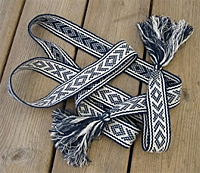
Sami cultural band
The Sami are a nomadic, indigenous people in northern Scandinavia. They are known as the people of the sun and the wind. Some Sami still work as reindeer-keepers. Traditional Sami clothes are decorated with colourful, woven bands and bands like this used as shoelaces.
Use fire safely!
Use fire safely!
Tentipi® Nordic tipis are designed to be used with an open fire or stove; it is this feature that makes them a home from home in all weather conditions. But please check local regulations, read and understand the instructions provided, and make sure you are fully competent to deal with the risks involved, before striking that match.
Tentipi® is a registered trademark of Tentipi AB












